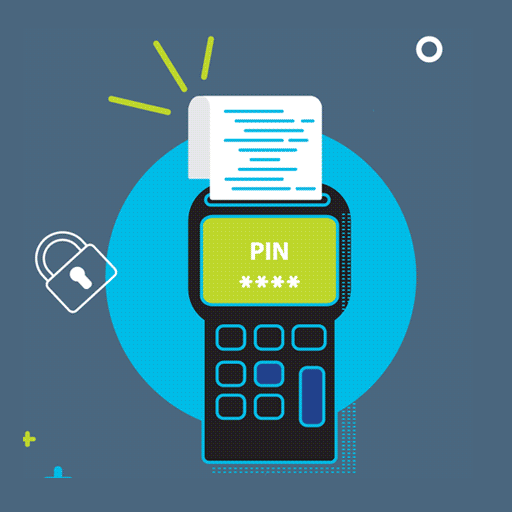JOËLLE THOMPSON

Professor Felicity Burt from the Department of Virology of the University of the Free State
Photo Provided
Semester recently conducted a virtual interview with Professor Felicity Burt from the Department of Virology of the University of Free State. She shared some valuable insights for school learners about the Corona virus and the prevention of its spread.
It is hard to believe that something as small as a virus can turn the world upside down in five short months. In order to provide accurate answers, one must do research on the closely related members of the Corona virus family. It is alleged that the current outbreak originated when the virus was transferred to a susceptible human host via a bat or pangolin, the intermediate host, sold from a live-animal market in the city of Wuhan in China.
The virus then made use of the human host’s cell-machinery to produce duplicates of itself while inducing a respiratory tract infection which subsequently infected another human being. A worldwide pandemic took hold.
It is difficult to appreciate how useful viruses can be during a pandemic when everyone is so afraid of contracting a viral infection. Viruses infect a host, transfer genetic material and use the host’s cell-machinery to produce more duplicates. In this way they help shape bacterial and other host diversity and influence biogeochemical cycles.
1.What are some of the roles of viruses in our world?
Scientists can use a benign virus and insert it into a pathogenetic virus (a virus that causes disease). They can then use it in a vaccine. Cells are produced that protect without causing harm. This is also used, for example, to treat cancer cells. It targets a cell with a specific genetic make-up. Doctors treat genetic diseases using cell therapy. The Ebola virus outbreak of 2014 in West Africa was controlled by using a vaccine. This vaccine was made by harnassing the Adeno virus, a glycoprotein of a virus. We can use common viruses that cause mild diseases to produce a vaccine against malignant forms of a virus.
2. On what surfaces can the Corona virus survive the longest?
It is very difficult to give precise answers on the lifespan of the Corona virus because the results are different in a laboratory compared to conditions where the environmental factors cannot be controlled. The Corona virus is spread by airborne droplets. Viruses, dormant without a host, lack the necessary materials to reproduce and can survive only for certain time periods on certain surfaces. A study published in the New England Journal of Medicine shows that the Corona virus that causes COVID 19 can survive in the air for up to three hours. On copper and cardboard, it could remain viable from 4 to 24 hours.
3. Is there permanent immunity to the virus?
There were reports that patients relapsed after they had recovered from the virus, but this was misinformation as the cases reported were not COVID 19 but other respiratory viral infections. Studies on two other viral outbreaks related to the coronavirus, the SARS (Severe Acute Respiratory Syndrome) in 2003 and the MERS (Middle East Respiratory Syndrome) in 2013 proved thatone is likely to develop immunity. The biology of these closely related viruses suggests the possibility of developing immunity which could last for two to three years.
4. What age group is at higher risk for complications?
The high-risk age group is those aged 65 and older. In this group the mortality rate is the highest. It also affects those with underlying diseases such as diabetes, heart and kidney complications, patients on chemotherapy, patients infected with Tuberculosis, and those on immune- suppressants. The effect on persons infected with HIV (Human Immunodeficiency Virus) is not known yet as other countries do not have the same high rate of infected persons as Southern Africa.
5. What are some of the pros and cons of wearing a mask?
The sole purpose of the masks is not to protect the wearer but rather to reduce the spread of infected droplets when a person with COVID 19 exhales, sneezes, or coughs. The public has been encouraged to use cloth masks instead of disposable surgical masks and N95s as they were in short supply and are to be only for the use of the many medical workers in the frontlines. Masks are not 100% effective, but it can help reduce the risk of transmission. It is a precaution and not a prevention. If the wearer fiddles with it and it is not worn correctly it will cause more harm than help. If the wearer constantly takes the mask on and off this will increase the chance of contamination.
Adhering to the following tips on how to wear the mask correctly can help improve their efficiency:
Wash your hands before handling the mask.
Cover your mouth and nose using the correct side of the mask and loop the ties behind your ears or head with the loop ties.
The mask should be comfortably tight and not restrict your breathing.
When one removes the mask, take it off from the behind the ears or head to avoid touching the accumulated number of droplets in the front of the mask.
When washing the mask, in soapy hot water, in the washing machine or in freshly diluted household bleach, ensure the outer surface of the mask does not touch you.
Do not remove the mask to talk.
When eating and drinking do not let the mask hang around your neck.
When taking the mask off leave it in a place where others are not exposed to it.
6. What is the best advice for school learners going back to school?
Firstly, the maintaining of hand hygiene using hand sanitizer with at least 70% alcohol is advised.
Wash hands for longer than 26 seconds to ensure maximised protection.
Social distancing of 1,5 metres to 2 metres to avoid the spread of infected droplets
Practise good sneezing and coughing hygiene.
Greet fellow students with an elbow or foot touch.
The wear of a cloth mask will help reduce some transmission.

maimounstore.com 
the times.co.uk











